A Centuries-Old Technique: Thistle wool felt
Words and pictures by Rowena Zuercher
Within the past few years, I’ve developed a fondness for the idea of “place” within my fiber craft. Using fibers and materials local to where I live helps me learn about, and appreciate, the land in creative and surprising ways. During a recent plant fiber deep dive, I came across a blurb about thistle wool that immediately piqued my interest. I was reading Christiane Seufferlein’s edited document of German texts on flax and linen processing from the eighteenth to the early nineteenth century (Seufferlein is the founder of Berta’s Flax Guild, dedicated to preserving and promoting traditional flax craftsmanship around the world). In one section on spinning and weaving materials, a 1792 newspaper or magazine article mentions a hatter who was said to have made hats partly from thistle wool and partly from sheep’s wool: “The wool from the thistles is immediately extracted from the seed pods [. . .] dried in the air [. . .] and then processed like other animal hair without further preparation.”
The source goes on to claim that 4,300 thistle heads should weigh about three pounds, and that will yield about one pound of pure thistle wool. Supposedly this one pound of thistle wool could go as far as making ten hats. I did some further research but couldn’t find how much animal wool was typically used for one felt hat or any information about the ratio of thistle wool to animal wool.
Experimenting with thistle wool
Seufferlein notes in a footnote that thistle wool refers to Cirsium vulgare or any other wooly thistle variety. Near my home in Colorado, plenty of invasive Canadian thistle grows in open spaces, providing just what I needed to make my own thistle felt. I kept an eye on the thistles, and when they looked ready to burst, I chose a hot, dry evening to harvest. I reached into the heads of the flowers and pulled out just the fluff, rather than taking the whole seed head. I stuffed a quart-sized ziplock bag in ten minutes. The original source didn’t mention whether the seeds were removed from the fluff, but I went ahead and separated them. That process took me about an hour, which was faster than I expected. Removing the seeds also allows me the choice to compost my felt pieces in the future without replanting the thistles. The last thing I want to do is help propagate an invasive species.
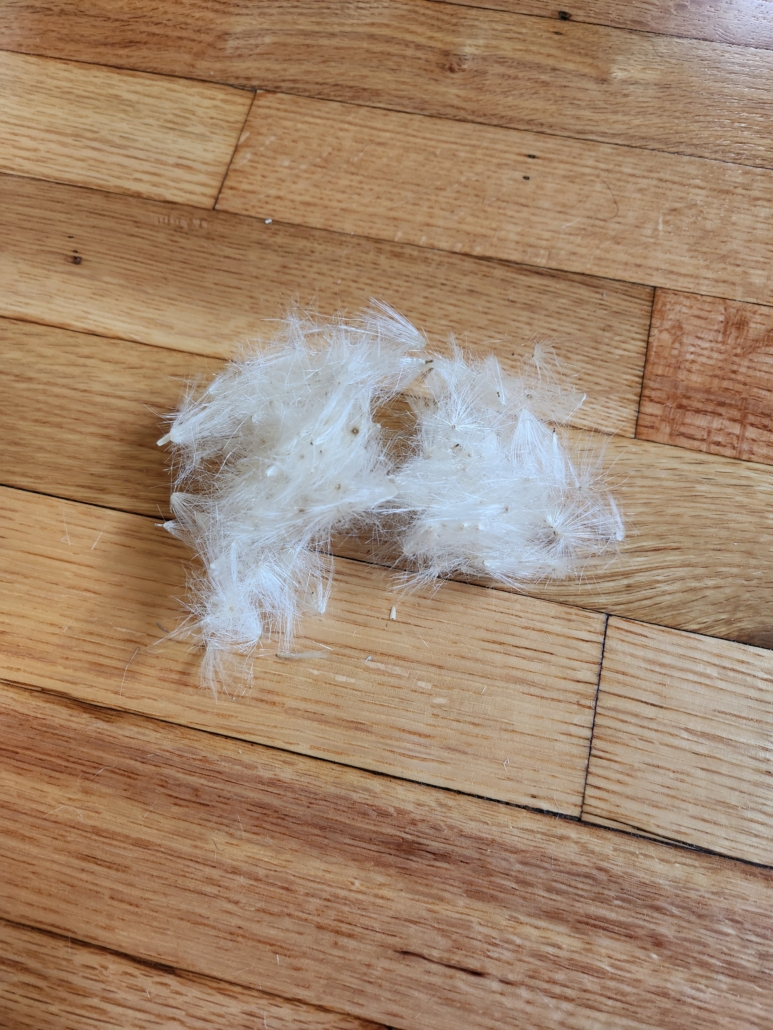
While I don’t know much about hat felt, I do have some basic experience with wet felting, so I did several tests. I used a squeeze bottle of warm water mixed with just a few drops of dish soap to wet the fiber. I rubbed it with my hands until I had a shape that held together and then sandwiched the felt piece between sheets of bubble wrap to roll on the countertop. Because my samples were small, the felting process didn’t take very long. I made each sample one at a time, but I tried to use the same amount of water, friction, and time for each piece, relative to size.
I’d also like to add that my percentages are by volume, not weight. My thistle wool took up a lot of space but weighed almost nothing. I combined the thistle with dark brown Shetland wool roving from my stash to keep as close to the original black color of the source material as possible.
Control: 100 percent Shetland wool felt sample
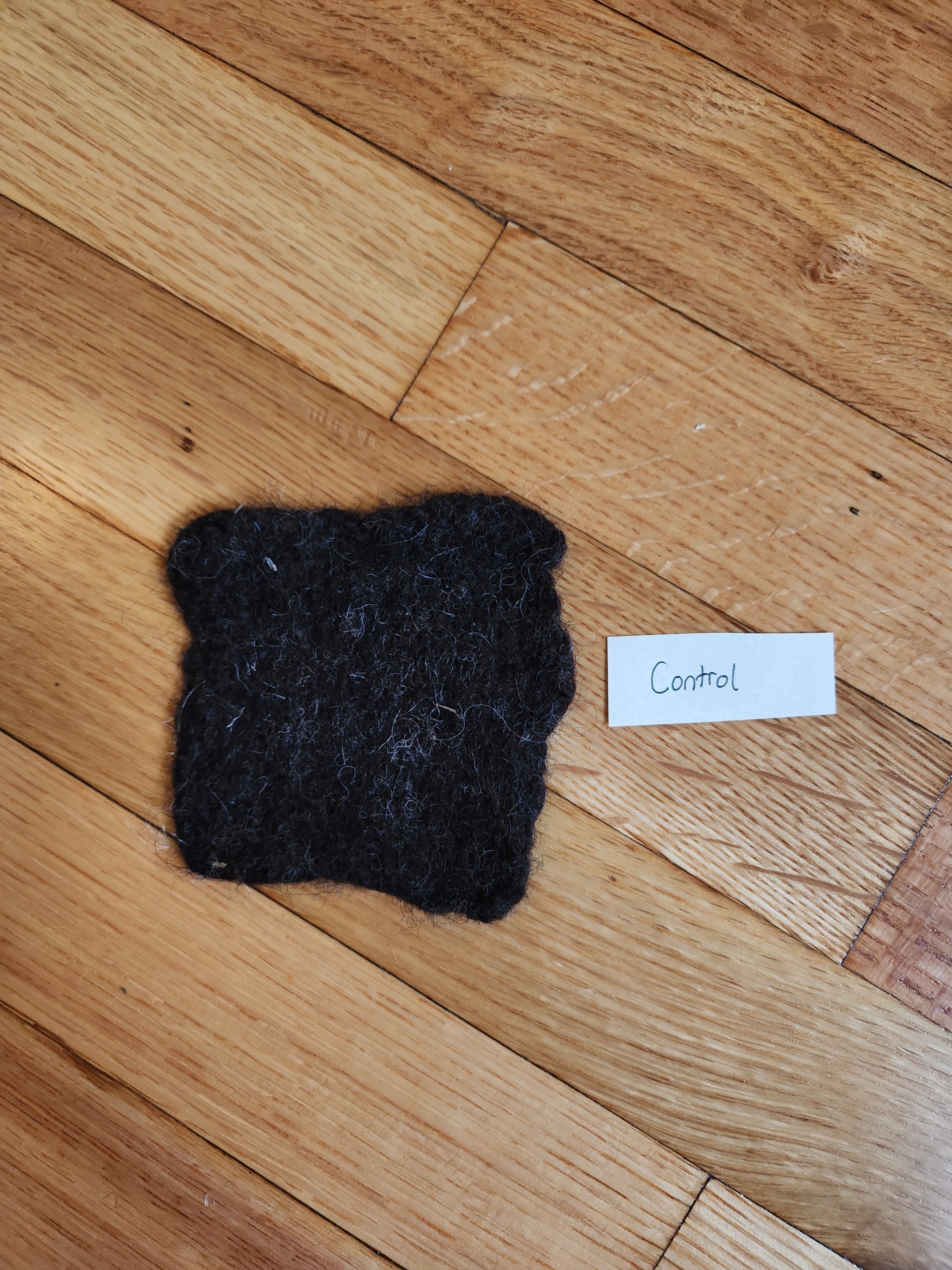
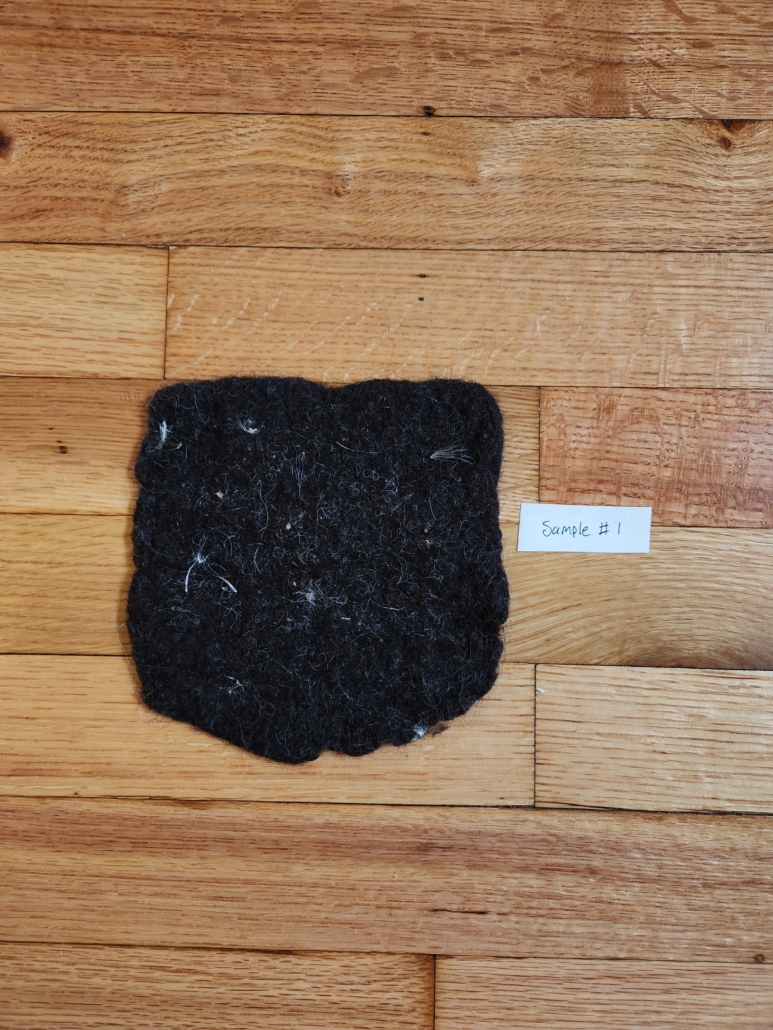
Sample 1: 25 percent thistle, 75 percent wool. I alternated layers of wool and thistle (five layers total, sandwiching thistle between wool). This created a nice, dense, and even felt. The thistle is not very visible, but you can feel it in the layers by squeezing the felt.
Sample 2: 50 percent thistle, 50 percent wool. Again, I alternated layers. The thistle was much more obvious in this sample but still made a nice dense felt. It was certainly usable.
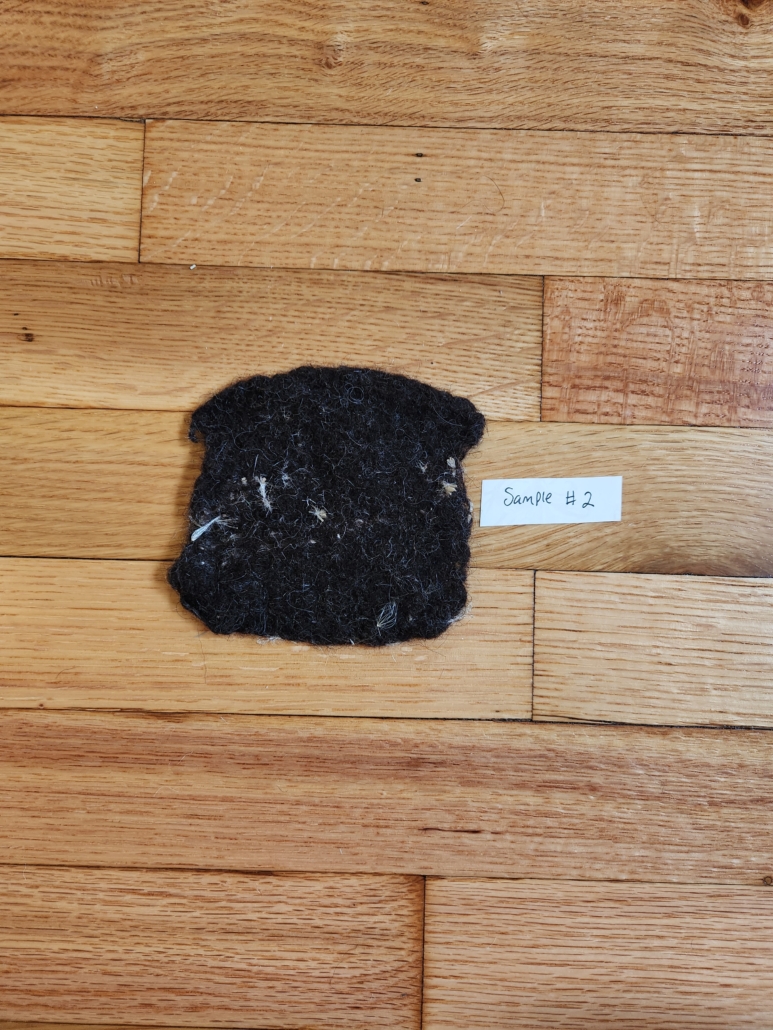
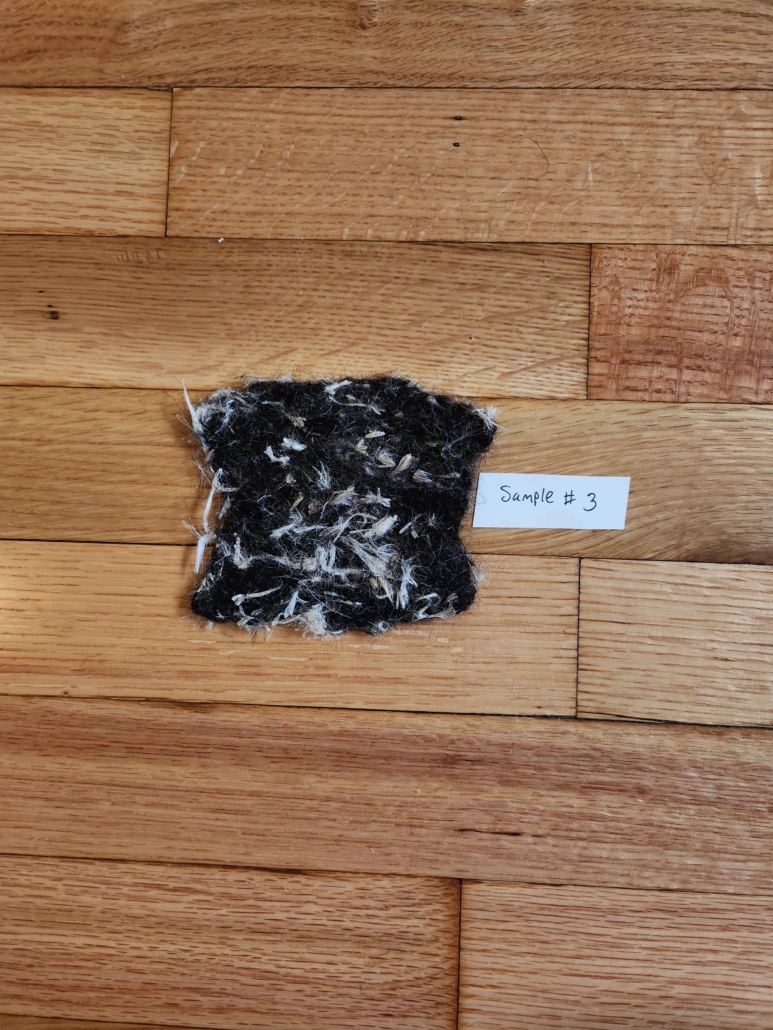
Sample 3: 50 percent thistle, 50 percent wool. This time I fluffed the Shetland wool and the thistle together into a loose batt, with all the fibers combined. This did not yield a good felt sample. The thistle was slipping out of the felt, and the finished piece was messy and uneven.
I was pleasantly surprised by my first two samples. I think the thistle layers need to be sandwiched between wool layers to hold them in place, but the thistle does add bulk and structure to the felt. I can see how this would absolutely be an economical choice for a hatter who had access to lots of thistle to supplement the sheep’s wool in their hats.
Spinning the thistle
Spinning the thistle was not successful for me. It was too staticky, and the staple length was too short to evenly blend. Similar to my third felt sample, the wool and thistle did not want to blend together as one batt, and the thistle just popped out during spinning. Like the seed fibers of milkweed plants, thistle seems better suited for insulating and felting than spinning.
Rowena Zuercher is a freelance editor and researcher who dedicates most of her free time to fiber and textiles. She recently moved from Aurora, Colorado to Goshen, Indiana with her husband Ryan and their turtle, ball python, and aquarium of fish. You can learn about her many heritage craft explorations on Instagram @homesaponified.




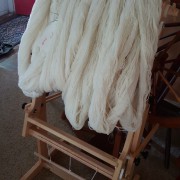
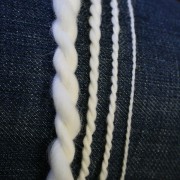
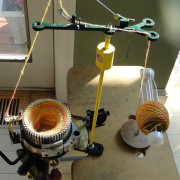
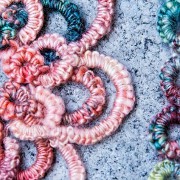
Leave a Reply
Want to join the discussion?Feel free to contribute!